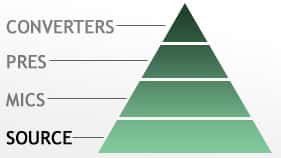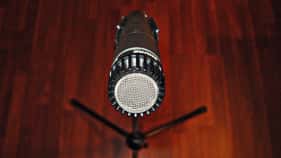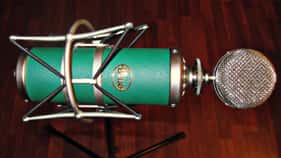
Drum Overhead Miking – Stereo Balancing of Cymbals, Drums and Room
Ah, drum overhead miking. We have come to the last week in this series of mic experiments. In the past few weeks, we’ve explored different microphone sounds on the snare, kick, toms, and hi hat. Now, we sample some different ways to capture the whole kit – overheads.
Overhead mics are a source of endless debate. Overheads capture a balance of the drums, the cymbals, and the room. Some people adhere to old school practices where the overheads are supposed to be the main microphones that pick up the kit as a whole (balanced drums and cymbals, some to lots of the room). Others use a more modern “hi fi” approach and use overheads primarily for the cymbal information (minimal room, some drums, lots of cymbals). Then there are the methods – ORTF, XY, “Recorderman,” spaced pair, etc, etc, etc.
The drum overhead miking sound samples in this entry deal primarily with either the spaced pair (a more modern approach that favors cymbals) and the XY method (a more balanced kit and cymbal level with varying amounts of room). All mics were captured through the same Vintech X81 preamps with no additional EQ or compression and balanced for consistent approximate volume. All you hear are the mics. All spaced pairs were aligned so the capsules of each mic were equidistant from the center of the snare drum with the hi-hat side mic being about 1.5 feet above the first crash cymbal. All XY pairs were aligned so that the snare fell close to the center of the setup and about 1.5-2 feet above the cymbals.
Blue Kiwi
 I love large diaphragm condensers. The Kiwi is a great mic for everything from vocals to overheads and feature omni, bi-directional, and cardioid pickup patterns. They have a nice smooth lows and mids with a bump between 8.5k and 12k. It seems to naturally accentuate some of the brilliance that I want in my cymbals. At the same time, depending on the cymbals, the high could be a little harsh. Also, if the style of song is not very modern, you may want to reach for something a little darker. The sample features a spaced pair setup with the cardioid pickup pattern.
I love large diaphragm condensers. The Kiwi is a great mic for everything from vocals to overheads and feature omni, bi-directional, and cardioid pickup patterns. They have a nice smooth lows and mids with a bump between 8.5k and 12k. It seems to naturally accentuate some of the brilliance that I want in my cymbals. At the same time, depending on the cymbals, the high could be a little harsh. Also, if the style of song is not very modern, you may want to reach for something a little darker. The sample features a spaced pair setup with the cardioid pickup pattern.
Neumann KM184
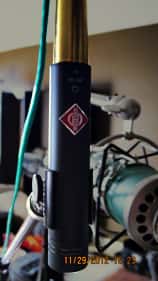 On the other end of the size spectrum are these pencil condensers from Neumann. They are much darker and a little grittier than the Kiwis. Being smaller, they can achieve a greater focus. However, they are not as smooth as the Kiwis and could end up unflattering to cymbals that are really “metally” or “clangy.” In this example, they are set up in the same spaced pair arrangement as the Kiwis. Also note that the KM184 are susceptible to capsule distortion at high SPLs and not as forgiving as their vintage KM84 cousins.
On the other end of the size spectrum are these pencil condensers from Neumann. They are much darker and a little grittier than the Kiwis. Being smaller, they can achieve a greater focus. However, they are not as smooth as the Kiwis and could end up unflattering to cymbals that are really “metally” or “clangy.” In this example, they are set up in the same spaced pair arrangement as the Kiwis. Also note that the KM184 are susceptible to capsule distortion at high SPLs and not as forgiving as their vintage KM84 cousins.
AEA R88
 A beautiful ribbon mic from AEA, the R88 features stereo elements in an XY pattern. The ribbons are quite long and the mic is quite large – use a hefty boom stand. As expected for ribbons, the sound is warm and a little on the dark side, though not without some decent modern clarity. There is plenty of low end punch. The positioning that this mic all but insists on with its size and XY positioned elements almost guarantee hearing more of a balance between kit and cymbals than with the Kiwis and KM184s. There is also more room present as ribbons are naturally bi-directional. This is great if you have a good drum room. It could be a detriment if you don’t. The imaging is not as wide as with spaced pairs.
A beautiful ribbon mic from AEA, the R88 features stereo elements in an XY pattern. The ribbons are quite long and the mic is quite large – use a hefty boom stand. As expected for ribbons, the sound is warm and a little on the dark side, though not without some decent modern clarity. There is plenty of low end punch. The positioning that this mic all but insists on with its size and XY positioned elements almost guarantee hearing more of a balance between kit and cymbals than with the Kiwis and KM184s. There is also more room present as ribbons are naturally bi-directional. This is great if you have a good drum room. It could be a detriment if you don’t. The imaging is not as wide as with spaced pairs.
sE2
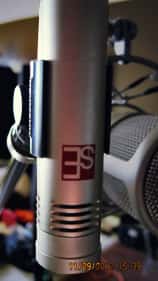 Back to spaced pair small diaphragm condensers. These legacy sE mics add quite a top end boost that is a stark contrast to the darker KM184s. They are brighter than the Kiwis. If you have a drummer with dark moody cymbals and need a brighter tone, mics like these may be a good starting point for your sound. Since they are small diaphragm, you can focus on the cymbals or kit and leave out a good deal of the room if desired. I might use these for drum overhead miking in a smaller, deader room.
Back to spaced pair small diaphragm condensers. These legacy sE mics add quite a top end boost that is a stark contrast to the darker KM184s. They are brighter than the Kiwis. If you have a drummer with dark moody cymbals and need a brighter tone, mics like these may be a good starting point for your sound. Since they are small diaphragm, you can focus on the cymbals or kit and leave out a good deal of the room if desired. I might use these for drum overhead miking in a smaller, deader room.
sE H3500
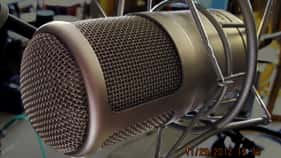 Ah the sE FET mics. They are huge, heavy mics, but they have a great sound. In this sample, I was surprised by the resonant bass they tended to pick up from the kick/low tom. I place these in between the Kiwis and the KM184s in terms of tone, with a little of the low end punch the AEA provides. While it has great lows, the highs, depending on the cymbals and the room, are either just what you want or emphasize too much sizzle with no in between .
Ah the sE FET mics. They are huge, heavy mics, but they have a great sound. In this sample, I was surprised by the resonant bass they tended to pick up from the kick/low tom. I place these in between the Kiwis and the KM184s in terms of tone, with a little of the low end punch the AEA provides. While it has great lows, the highs, depending on the cymbals and the room, are either just what you want or emphasize too much sizzle with no in between .
Neumann SM2
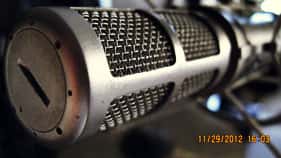 I love this microphone on acoustic guitars, even piano at times. It is a stereo element tube condenser microphone from the late 50s. The elements are capable of up to 270 degrees separation and cardioid, bi-directional, and omni pickup patterns. We used the mic in the sample below in a 90 degree XY pattern with a cardioid pickup. It is an odd bird on drums. I feel that the stereo width is much less than that of the other stereo mic we used – the AEA. There’s not a lot of low end, which could be good or bad depending on the situation. An interesting thing to me is how compressed the mic sounds naturally. It does not break up, but this does indicate to me that the mic is not a fan of high SPLs and hard transients. Still, even that can be used creatively. Don’t say we never tried.
I love this microphone on acoustic guitars, even piano at times. It is a stereo element tube condenser microphone from the late 50s. The elements are capable of up to 270 degrees separation and cardioid, bi-directional, and omni pickup patterns. We used the mic in the sample below in a 90 degree XY pattern with a cardioid pickup. It is an odd bird on drums. I feel that the stereo width is much less than that of the other stereo mic we used – the AEA. There’s not a lot of low end, which could be good or bad depending on the situation. An interesting thing to me is how compressed the mic sounds naturally. It does not break up, but this does indicate to me that the mic is not a fan of high SPLs and hard transients. Still, even that can be used creatively. Don’t say we never tried.
Hopefully these examples showcase how different the tone of the drums and cymbals can be depending on the mics selected for overheads. If anyone wanted to experiment with different drum overhead miking sounds in a session, I would suggest setting up multiple overhead mics as phase coherent pairs to record simultaneously and then decide what worked better for each song o the mix (maybe both?!). If you can get the overheads right, especially if the track needs a natural drum sound and the player is balanced, the rest of your drum mix will come together so much easier.

